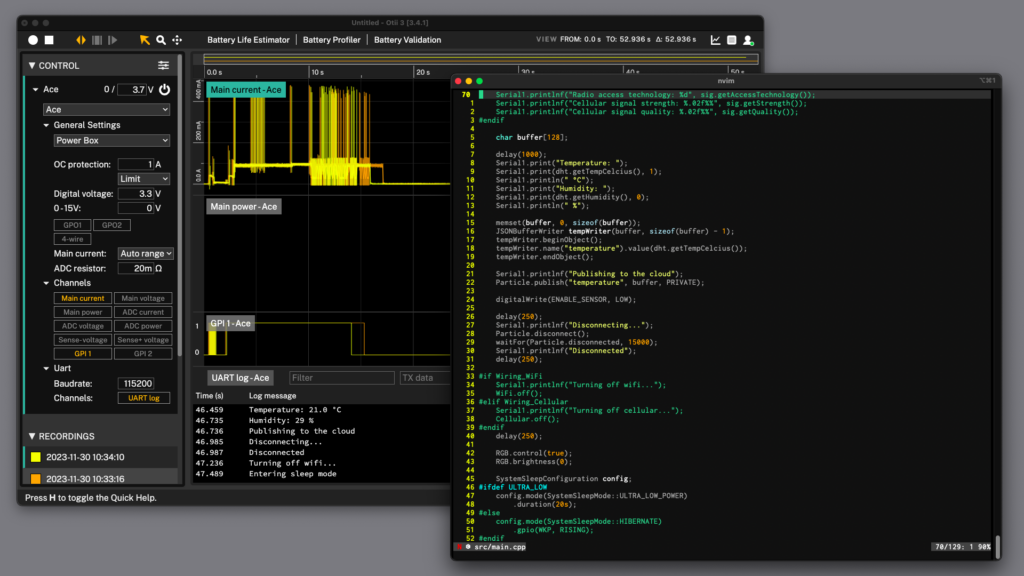Not a software problem…
Not a software problem…

The statement that energy consumption is not predominantly a software-related issue holds validity for specific types of software development. This perspective implies several key factors. Firstly, it suggests that the ability to effectively monitor energy consumption in these contexts is limited or challenging. Monitoring is a critical step in managing energy efficiency, and if it cannot be performed accurately or at all, the role of software in controlling energy usage becomes minimal. Secondly, it implies that available optimization methods are either scarcely accessible or, when implemented, yield insignificant results. This can be due to various reasons, such as the nature of the software, the complexity of the optimization process, or the inherent limitations of the technology being used.
Software for low energy consumption – is it worth is?
Finally, the statement considers the cost-benefit analysis of monitoring and optimization efforts. In some scenarios, the financial and resource expenditure required to implement these measures outweighs the potential benefits. This is particularly true in cases where the energy savings achieved are minimal compared to the overall operational costs, rendering the investment in energy-efficient software practices economically unfeasible. Thus, while not universally applicable, this view acknowledges that in certain software development environments, addressing energy consumption is either impractical or ineffectual from a software standpoint.
Code can make or break the battery life for embedded devices
With that said, there are numerous instances in software development where code efficiency directly impacts energy consumption, becoming a critical factor in battery life, especially in mobile and embedded systems. In these cases, the software is not just a part of the system; it’s a significant determinant of its energy efficiency.
In mobile applications, for instance, inefficient code can lead to excessive CPU usage, which is a primary consumer of battery power. Optimizing algorithms, managing memory usage effectively, and minimizing unnecessary background processes can dramatically extend the battery life of mobile devices. This optimization is crucial in today’s world where mobile device usage is ubiquitous, and users demand longer battery life for convenience and functionality.
Similarly, in embedded systems, such as those used in IoT devices, the efficiency of the software has a direct impact on power consumption. These devices often operate on limited power sources, like batteries or energy harvesting. Efficient software can mean the difference between a device that needs frequent recharging and one that can operate autonomously for extended periods. This is particularly important in remote or inaccessible locations, where changing or charging batteries is impractical.
Tips to get started
There is no complete and impeccable method to determine how deep energy optimization can and should be performed for a particular product. Nevertheless, verifying your situation against the checklist below may lead to some interesting opportunities.
Again, software affects energy consumption, and the software (SW) developer is as responsible for it as much as hardware, mechanical, RF, and other engineers. So, energy optimization is on your task list IF:
- HW is being developed within an arm’s length. If you do have access to pre-production prototypes, use them to see how your code affects system components and total consumption.
- You have access to the configuration of the CPU and peripherals. The SW developer is then responsible for selecting appropriate power modes and timely switching between them.
- SW architecture is designed in-house. Custom firmware, unlike a kernel or framework, does not need to be universal and can be well optimized for performance and low consumption.
If you are checking off all the criteria above, you’re most likely in a bare metal world. Welcome! Regardless, it’s time to get acquainted with benchtop multimeters, SMUs, oscilloscopes, or Otii Arc/Ace Pro (of course)!
But even if you’re developing a custom app for a smartphone OEM (Original Equipment Manufacturer), it won’t hurt to request a breakdown board from the prototype workshop or ask for help to do this and verify your application.
Code mindfully and efficiently
While it’s true that in some software development scenarios, energy efficiency might not be significantly influenced by the software, there are many other contexts where the opposite is true. In these situations, software optimization for energy efficiency is not only feasible but also essential. It has a profound impact on battery life, operational costs, and even the environmental footprint of the technology we use daily. So why should you do it? Well, not only for the obvious reasons to get happy customers, think and act sustainably, and lots of other noble ones… Do it because you can! You’re the master of the code. Do it because no one else can do it as well as you. Simply do it!
Become a member of our community
Gain access to exclusive resources, educational materials, and expert advice to enhance your knowledge and understanding of powering IoT devices and battery testing.